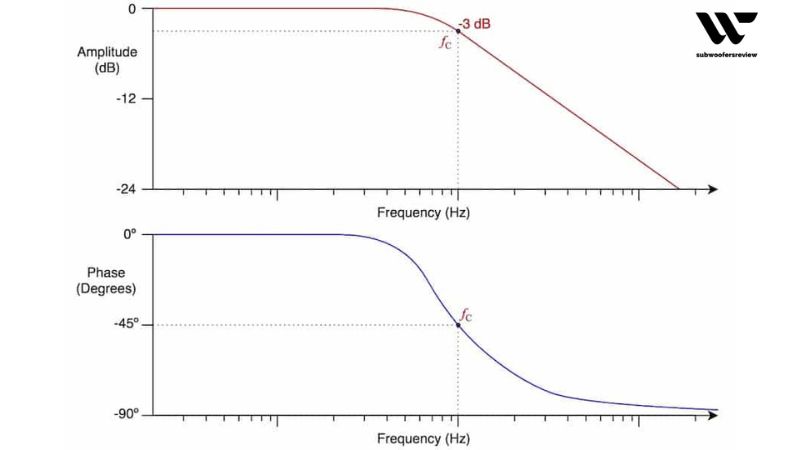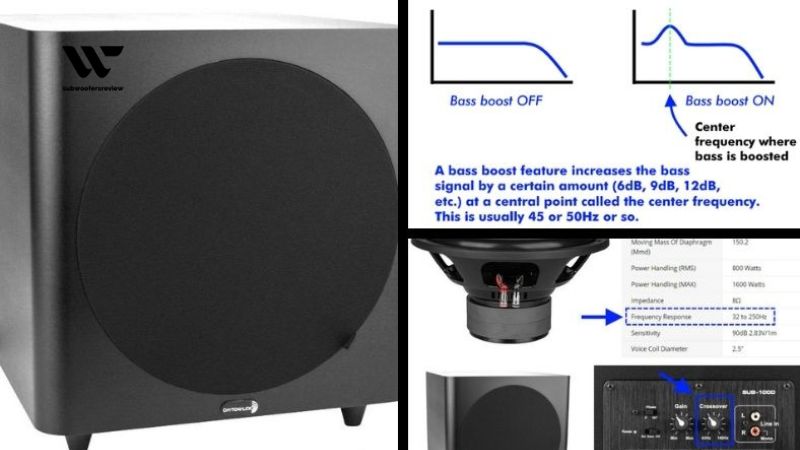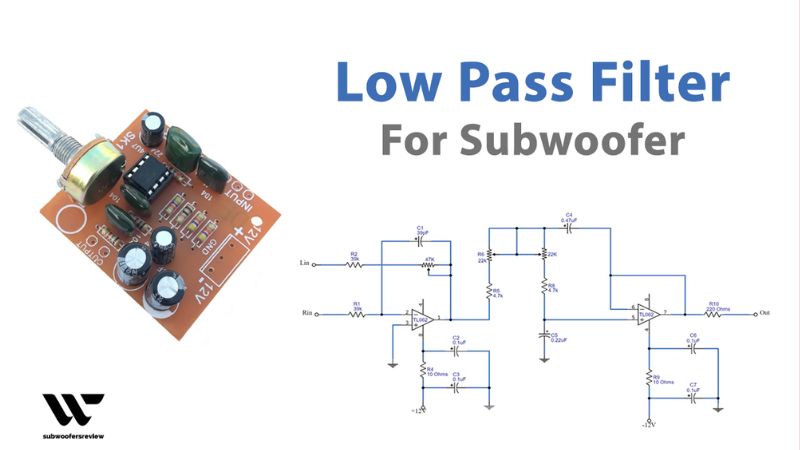Are you someone who loves to crank up the bass and feel the music pulsating through your body? If so, you’ve probably come across the term “low pass” when researching subwoofers. But what is low pass on a subwoofer? In this blog post, we will dive into the world of bass management and explore the concept of low pass on a subwoofer. So, get ready to enhance your audio experience and discover the secrets behind achieving that deep, earth-shaking bass you crave. Let’s get started with subwoofersreview!
What is Low Pass On a Subwoofer?
A low pass filter (LPF) is an audio signal processor that subtracts undesirable frequencies from a signal above a predetermined cutoff frequency. While low frequencies are allowed to pass through (preferably unchanged), it gradually filters out (attenuates) frequencies higher than its cutoff frequency. Because it cuts off high frequencies above a specific cut-off point, a low-pass filter is also sometimes referred to as a high-cut filter.
In contrast to an 80 Hz Low get Filter, which only allows sounds below 80 Hz to get through, subwoofers may often play frequencies between 20 and 200 hertz. You are unable to play frequencies higher than the subwoofer’s preset volume. This is done to improve the subwoofer’s bass. One of the key uses for it is that it gives the playback depth.
In essence, the subwoofer gives the user the ability to control the bass output. It restricts how much bass the subwoofer can produce above a certain threshold. The reproduction of low-frequency bass by a subwoofer necessitates the use of a low-pass filter. The LPF results can vary significantly depending on the size of the subwoofer that is selected. Therefore, check to make sure the subwoofer and LPF are not incompatible or mismatched.
In most circumstances, low-end bass subwoofers are best suited (this is true for both home and automotive audio systems). That’s because, in contrast to smaller speakers, the cone size is large enough to generate effective bass waves. Due to its constrained frequency response, the subwoofer is also typically ineffective in producing high frequency sounds in music, such as vocalists or treble.

Install a Home Stereo Low-pass Filter
For a home stereo subwoofer, 70 to 80Hz is a good range to set the low pass filter (LPF) at. When everything is in place, make slow adjustments while listening to the sound that suits you the best.
It’s ideal to have no gaps in the audio signal (no bass-deficient areas) and only clean, clear bass coming from the subwoofer when listening to music or watching a movie. If the volume level appears to be too low in some circumstances, you might need to raise the powered subwoofer’s gain.
Depending on the mode, the low frequency effect (LFE channel) output of a home receiver might have a number of various modes. Some play stereo audio and have an adjustable low-pass filter, while others have a set cutoff frequency (particularly for surround mode).
Install a Car Stereo Low-pass Filter
For automotive audio systems, the same guidelines generally apply; a good range is typically between 70 and 80 Hz. A high crossover can aid in reducing distortion and improving sound quality because small speakers are typically not very good for low-frequency audio. especially those that are attached to the dashboard or doors of a car or truck.
For instance, employing a high-pass filter with a setting of about 56–60Hz for your front speakers will stop them from being severely distorted, particularly at higher power levels, in conjunction to a low-pass filter for your sub speakers. Additionally, you can push them harder for increased volume.
Why Use a Low Pass Filter?
The low pass filter can help the bass reach its full potential because it has so many applications and advantages. Higher frequencies are clipped by LPF to achieve this. It results in decreased frequencies. The speaker can be used if you wish to hear extra bass.
Your music can be muted with LPF. Not frequently done, but it looks good when blending music. Knowing what a high-pass filter performs is necessary in order to employ low-pass filters. It primarily improves sound by attenuating low frequency noises. While mixing, LPF, on the other hand, enables you to add depth to your song and isolate the individual elements.
Should LPF be On or Off?
One particular frequency range of sound can be produced by a subwoofer. The low bass is often the range’s maximum. High-frequency music sounds can only be produced by the subwoofer to a certain extent.
To create sound at lower frequencies, you should enable LPF. Continue to use it to give the sound greater depth. If you want to prevent the bass from being overpowered by the higher frequencies, turn it on. You can select the desired bass by enabling LPF. You can do this to produce a muted effect that will make the replay appear more dramatic. A wide range of uses and advantages are provided by LPF that is maintained.
You can keep the bass level as high as you’d like by disabling LPF. Playback isn’t always overpowered by higher bass frequencies, and the main speaker benefits from additional support. Higher bass frequencies can be output by the subwoofer if the LPF is disabled. We are aware that some people may not prefer higher bass frequencies. However, you can disable the LPF and enjoy the playback if you prefer bass that doesn’t stop.

Bottom Line
In conclusion, understanding the concept of low pass on a subwoofer is essential for achieving optimal bass management. By setting the low pass filter correctly, you can ensure that your subwoofer only reproduces the low-frequency sounds it is designed for, while allowing the other speakers in your audio system to handle the higher frequencies. This not only improves the clarity and balance of your audio, but also reduces strain on the subwoofer and enhances its longevity.
Remember to experiment and fine-tune the low pass setting to suit your personal preferences and the characteristics of your audio setup. With a well-adjusted low pass filter, you can enjoy deep, powerful, and well-defined bass that greatly enhances your overall listening experience.

